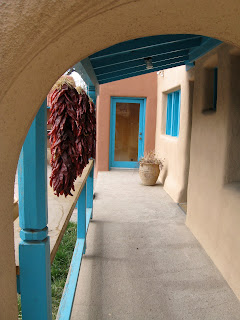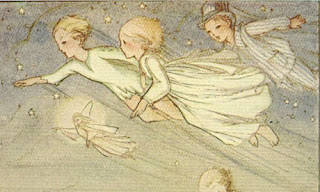new posts in all blogs
Viewing: Blog Posts Tagged with: Sharon Wildey Calle, Most Recent at Top [Help]
Results 1 - 6 of 6
How to use this Page
You are viewing the most recent posts tagged with the words: Sharon Wildey Calle in the JacketFlap blog reader. What is a tag? Think of a tag as a keyword or category label. Tags can both help you find posts on JacketFlap.com as well as provide an easy way for you to "remember" and classify posts for later recall. Try adding a tag yourself by clicking "Add a tag" below a post's header. Scroll down through the list of Recent Posts in the left column and click on a post title that sounds interesting. You can view all posts from a specific blog by clicking the Blog name in the right column, or you can click a 'More Posts from this Blog' link in any individual post.
 |
| Sharon Wildey Calle |
After a week's vacation in the "Land of Enchantment" (New Mexico), I have come home inspired and ready to write.
My only challenge... How do I recreate the diverse and magical spirit of this environment as a setting for a story?
Literature has long been inspired by place.
The Grapes of Wrath, Gone With the Wind, To Kill a Mockingbird- each of these transports us to a very specific time and environment.
Much is involved in scene setting. To give a true sense of place, one must incorporate the following: physical environment, people, culture, language, and history. It is challenging to not let your setting interfere with (or upstage) your plot. It must be seamlessly woven in between your characters' actions and dialogue.
As I sort through my photos, maps, and free brochures, I think of the people I met, the cultures I experienced, the landscapes I hiked through. I'm not ready to resign my memories to a scrapbook or picasa gallery just yet.
But I
am ready to share this adventure through storytelling.
What are some of the ways you incorporate a sense of place into your writing?
Are there certain children's books/authors that you feel do this exceptionally well?
.jpeg?picon=2049)
By: Sharon Wildey Calle,
on 3/10/2013
Blog:
The Paper Wait
(
Login to Add to MyJacketFlap)
JacketFlap tags:
inspiration,
Critique Groups,
Writer's block,
The Writer's Life,
The Craft of Writing,
writers on writing,
resources for writers,
The Challenge of Writing,
Sharon Wildey Calle,
Add a tag
We all have our tried-and-true recipes that we return to time after time for potlucks, dinner parties, or family meals. But what is your recipe for writing success?
- If an idea excites you, go with it.
- Be open to revision, and then be courageous and submit!
- Reach out, make friends, and support other writers.
What are the ingredients that led to your writing success? (Whether your success is writing your first draft, conquering revisions, submitting a manuscript, or celebrating your published book!)
I’ll start the recipe and you can each list your choice ingredients….
Recipe for Writing Success
- 1 clever idea
- 10 lbs. of elbow grease
- 5 cups of constructive critiques
As I was brainstorming for my blog post, I was determined to write a post that was relevant, interesting, inspiring, and witty. I had no trouble deciding between multiple ideas. Because I had absolutely no ideas to choose from.
Instead I wrote the following haiku:
Mind is a big blank
Can’t think of a thing to write
Wishing for a remedy
And then I got up and washed the dishes and made oatmeal chocolate chip cookies.
Writers, what do you do when the words just won’t come? How do you break through a creative block?
 |
| Peter Pan Illustration by Kathleen Atkins |
How do you enter the magical world of your young readers?
To get into the right mindset, I think back to how I felt as a child. I also get lots of ideas from my students (I teach elementary art).
But how do you tap into that world if you don’t interact with children on a daily basis?
One resource is
Edutopic’s list of winning student blogs by children ages 6-13. It’s a great way to research how today’s kids spend their time, what they care about, and what they find funny. (Notice how many of the blog titles include the word, ‘Awesome’.)
Another resource I love is the New York Times’ blog,
“Kids Draw the News.” On this site, children submit illustrations to accompany articles on current events. It’s a great way to discover how children view the world. Plus, their illustrations are a hoot!
What resources help you enter the world of young readers?
With the New Year just around the corner, resolutions for 2013 come to mind.
I resolve to write one picture book manuscript each month. How will I keep that resolution, you may ask?
Reading the daily
PiBoIdMo posts during November inspired me to do a little writing each day. Now I didn't say
good writing. I do have hope that the act of writing each day will eventually lead to good writing. Or even
really good writing. Or one day (gasp!) a published book!
Here’s to a creative 2013!
Do you have a New Year’s writing resolution?

The day of the SCBWI First Page Session had arrived. I laid the first page of my picture book manuscript on the long table with 34 others. It would be the first time it was read aloud in front of an audience and editors. I picked up my packet of manuscripts and took my seat. It was time to begin.
A volunteer read the first page of picture books, chapter books, and middle grade and young adult fiction. Two editors would then give their critiques.
Some manuscripts were funny, clever, and made the audience laugh out loud. Others were long-winded, awkward, and confusing. I wondered to whom each one belonged.
I looked around the room at the anonymous authors. I caught small glimpses of each person's life- their interests, sense of humor, dreams, and experiences. Their voices or the voices of people they know (real or imaginary)- filled the room.
As the reading continued, I tried not to be distracted by my anticipation. It was difficult. I flipped forward in the packet. My story was next!
The volunteer introduced my picture book. She read the story quickly, while I looked up to gauge the editors' responses. What did they think? They critiqued my work, and in less than two minutes, it was over.
I wanted to call out, “Wait!” I still had so many questions.
The beginning was rushed, the editors said. There wasn't enough passage of time during the character's journey. The title was bland.
But the editors also said it was a story/topic that children would relate to. It included strong writing with good rhythm and repetition. It had a real “picture book feel”.
On my drive home, I could have been inspired by the editors' positive comments. Instead, I thought of the other manuscripts. The ones that were funny, intriguing, memorable. The ones that stirred up personal memories in the editors. The ones they wanted to read more of. Why hadn't I written one of those?
A strong trait of any editor, writer, or artist is to see potential in a work. Michaelangelo said it best: “In every block of marble I see a statue as plain as though it stood before me, shaped and perfect in attitude and in action. I have only to hew away the rough walls that imprison the lovely apparition to reveal it to the other eyes as mine see it.”
My picture book may have thick, rough walls around it, but tools in hand, I'm ready to start carving!
Have you participated in a First Page Session? Was it a good or bad experience?








I can think of a couple of historical fiction novelists who did a great job of incorporating setting with plot and character - just about anything by Scott O'Dell and then there's Elizabeth Speare's THE WITCH OF BLACKBIRD POND.
Setting is my Achilles heel!! Such a hard thing to pull off seamlessly. I think the important thing to do, is not to make it seem like a 'list' of objects or quirks that place you in a scene. You need to pull out what's unique and create a real backdrop. Stephanie Perkins does an awesome job with setting in both her books ANNA AND THE FRENCH KISS and LOLA AND THE BOY NEXT DOOR. She captures both Paris and San Francisco in such a subtle way but you still get the flavor and feel of both - almost as is they are characters in the novels themselves.
I really enjoy a fun and unique setting-- like Alecatraz in Al Capone Does My Shirts. I agree with Robin that setting is a hard thing to do well. As long as it fits in perfectly in the background, it is wonderful-- but if it starts to become like a list or overwhelm the plot, I find myself feeling annoyed as a reader.
When I work on setting, I literally close my eyes, lean back in my chair, and watch my characters move through their environment. I watch them doing mundane activities as they move through their day. Move from room to room in the house, classroom to classroom in the school, etc. I try to become as familiar with their environments as I can before I write the scene, then incorporate what I learned as organically as I can.
I loved ISLAND OF THE BLUE DOLPHINS! I look forward to checking out Elizabeth Speare's book, too.
Thanks for the recommendations, Robin. I agree- when done well, the setting can feel like a character.
Brianna, It is so important to not let the setting upstage the plot. I have read books like that, too. Not so fun to read!
Judy, I love your visualization exercise. Instead of forcing the characters to fit a certain mold, you sit back and see what unfolds in your mind's eye. We could all do more of this when writing.